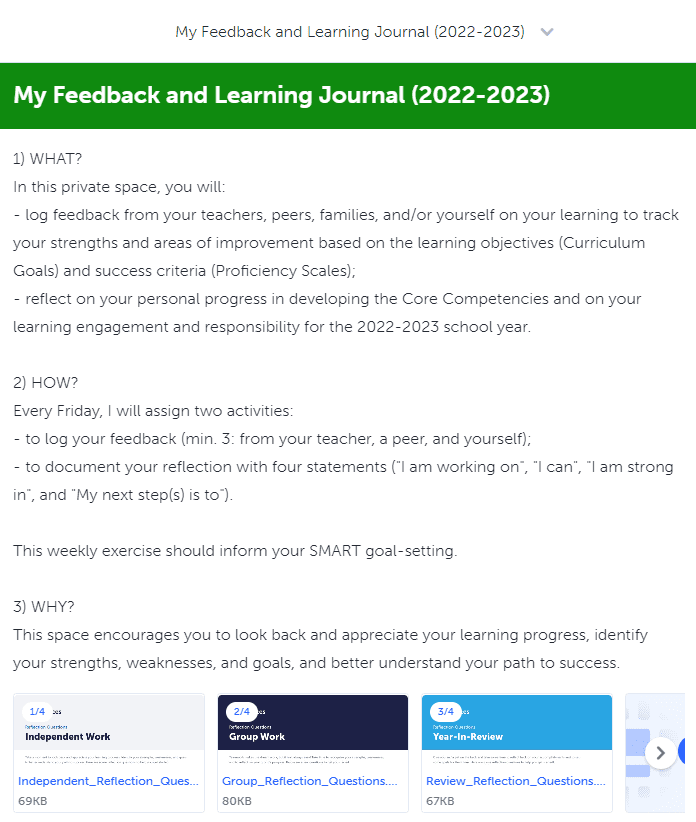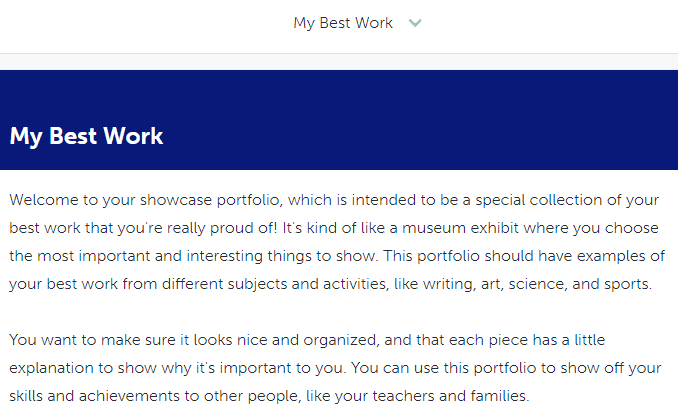When you look at your students, you don’t see their mid-term grade or the percentage they got on their last essay. You see the whole picture; a collection of what makes each student unique. You see their assignments and tests, but you also see their growth and their potential far beyond your class.
A portfolio allows everyone else to see that too.
A portfolio is a body of student work
At its core, a portfolio is a body of student work. In the classroom, a portfolio serves as a space for students to add content that demonstrates their learning in a variety of ways.
A portfolio takes a variety of formats
Portfolios can be digital or physical. They can be personal or shared. They can be class-based, project-based, or unique to the student.
These individual collections of work help students document their learning and reflect on progress over time, facilitate effective assessment for teachers, and/or create a final showcase of their strongest work.
Here are some examples of how portfolios have been implemented in different subjects:
- English Language Arts (ELA) - In ELA, portfolios can be used to collect and showcase student writing samples throughout the year. Students can keep a record of their writing process, including rough drafts, peer feedback, and revisions. The portfolio can also include written reflections on their progress as a writer, and goals for improvement.
- Mathematics - In mathematics, portfolios can be used to document student progress in problem-solving and critical thinking. Students can collect examples of their work on problem sets, group projects, and assessments. The portfolio can also include reflections on their problem-solving strategies and areas for improvement.
- Science - In science, portfolios can be used to showcase student investigations and experiments. Students can collect lab reports, data analysis, and reflections on their findings. The portfolio can also include reflections on the scientific process and the role of experimentation in scientific discovery.
- Social Studies - In social studies, portfolios can be used to collect evidence of student learning about historical events, cultures, and current events. Students can collect essays, research projects, and multimedia presentations. The portfolio can also include reflections on their understanding of the relevance and significance of historical events and contemporary issues.
- Art - In art, portfolios can be used to showcase student creativity and artistic development. Students can collect examples of their work, including sketches, drawings, paintings, and sculptures. The portfolio can also include reflections on their artistic process and inspiration.
A portfolio offers opportunities to showcase growth, reflection, and accomplishment
It's important to note that student portfolios may differ from professional ones, and there are various ways to use portfolios to capture and communicate student learning.
When using portfolios as a teaching tool, they need not always be used to showcase only the final product or highlights. Instead, they can be used to engage students in documenting their learning journey, including failures and reflections that led to meaningful learning experiences.
A portfolio for the classroom is a body of student work that can take on a variety of formats and showcase growth, reflection, and accomplishment.
With the appropriate Edtech tool, portfolio assessments can inform instruction and improve student learning outcomes. They enable teachers to gain a comprehensive understanding of a student's learning progress over time. SpacesEDU's Curriculum Tags and Proficiency Scale features support portfolio assessment by providing a structured approach to organizing and tracking student learning. Curriculum Tags allow teachers to align student work with specific learning objectives, making it easier to track progress and identify areas where students may need additional support. By analyzing samples of a student's work with the application of the Proficiency Scale, teachers can identify areas where the student excels and areas where they need to improve. This information can then be used to provide targeted feedback and design lessons that address specific needs to support student growth.
Furthermore, these portfolio assessment features can increase student motivation and engagement. Students have access to data that offers them opportunities to reflect on their learning and set goals for improvement. By reviewing their work and reflecting on the learning process, students can identify their progress and areas where they need to improve. This fosters a sense of ownership over their learning and develops essential metacognitive skills.
Finally, portfolios can provide a more comprehensive and authentic measure of student learning compared to traditional assessments. By collecting different work samples and reflections over time, digital portfolio tools can offer a more complete picture of a student's learning than a single test or assignment. This can aid teachers and students in understanding the depth and breadth of a student's understanding of a subject and provide a more accurate measure of learning outcomes.
Three ways to use portfolios in the classroom
There are three key ways to use portfolios to show learning in the classroom:
- Show the Process: Students collect and store evidence of learning and reflect on the process in a continuous cycle.
- Show the Progress: Students document growth and changes on their work over time to show development or improvement.
- Show the Product: Students curate projects, learnings, and evidence into a final “polished” product.
This concept isn’t new. In fact, in 1997, Charlotte Danielson and Leslye Abrutyn (formerly the Association for Supervision and Curriculum Development) outline their three categories as working portfolios, display portfolios, and assessment portfolios, in An Introduction to Using Portfolios in the Classroom.
What is new, however, is the improvements in technology that allow teachers and students to meaningfully and collaboratively apply this practice at scale.
In the classroom, you can combine all three types over the course of a term or school year, or focus on one area, depending on your goals for the portfolio.
1. Process
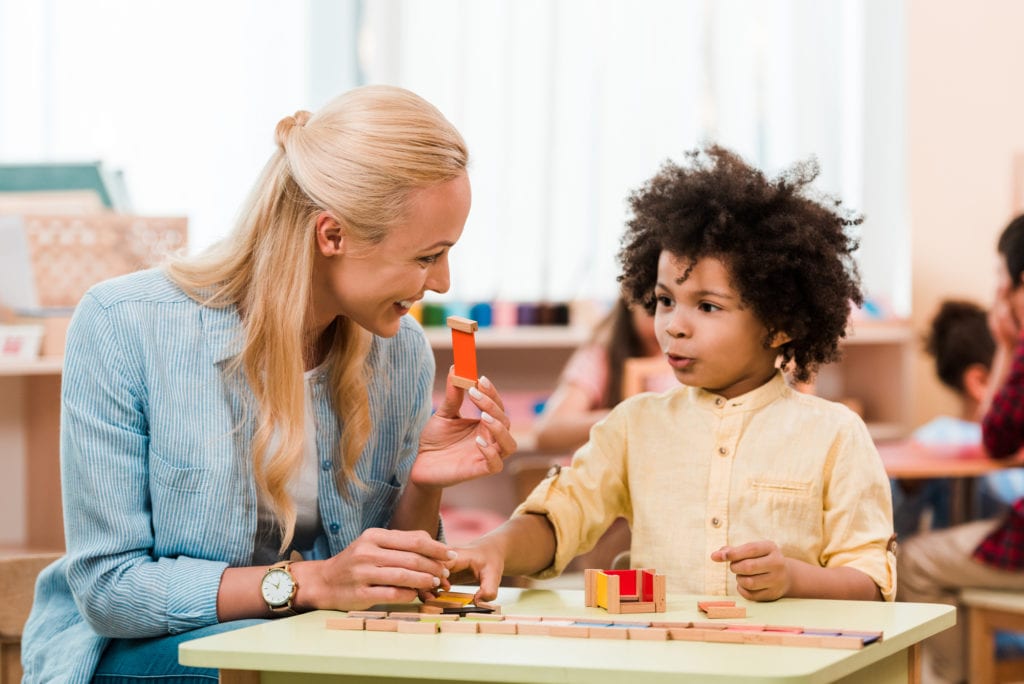
One way a portfolio is used in education is to document learning. Similar to a journal, students capture daily activities and write a reflection on what they learned or how they felt.
Instead of just uploading an assignment, a portfolio can be used to combine an assignment with a probing question to get the student to think about a challenge, key takeaway, or consider what they’d do differently next time.
As Danielson and Abrutyn mention when describing a working portfolio, this is often the stage where every artifact is collected and can later be moved and shared into a portfolio used for assessment or showcase purposes.
The main focus of using a portfolio this way is to have students reflect on their approaches, feelings, and learning over time.
2. Progress
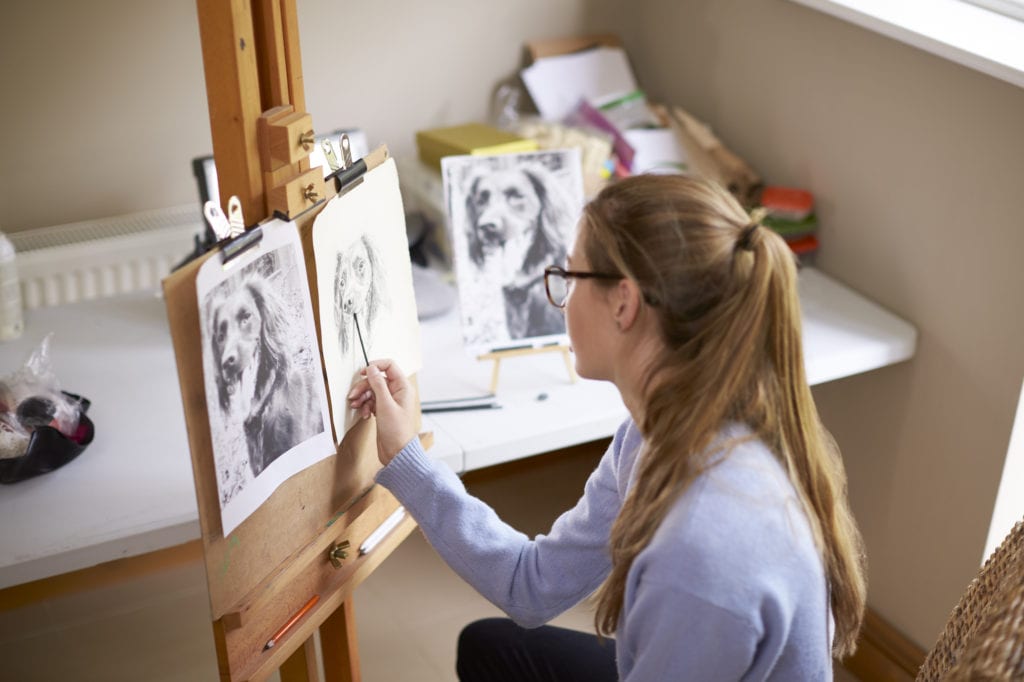
A portfolio can also be used to demonstrate progress, such as overall growth or mastery of a concept. Metaphorically, this is a space where the student shows the steps they took to go from a blank slate to a final masterpiece.
When using portfolios to evaluate progress, you can integrate a number of modern assessment practices that can be more effective and meaningful to students than a grade or score.
Portfolios make evaluation more of a conversation. Teachers can use the collection of work to conduct formative assessments with ongoing comments and feedback, rather than simply assigning a final grade.
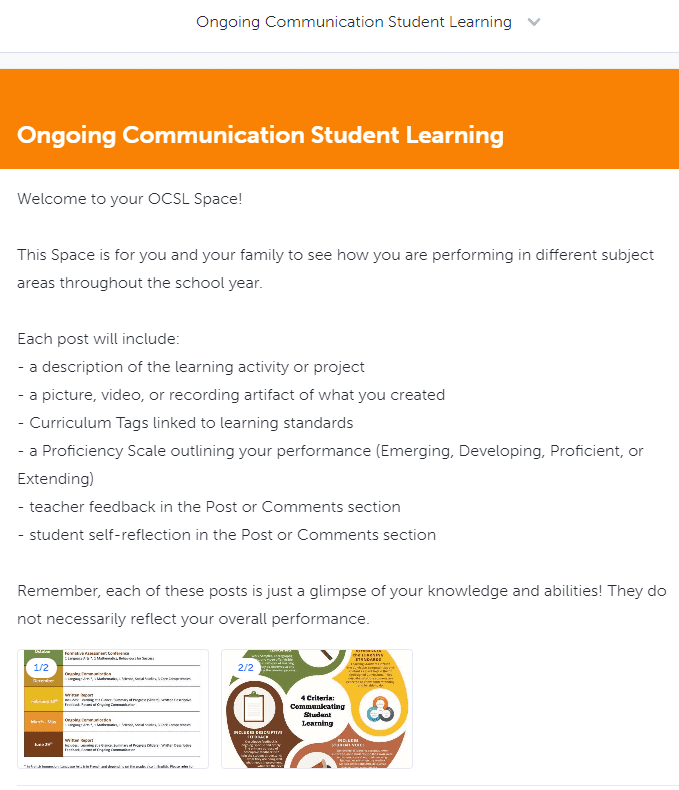
Example of an Individual Space designed for students to showcase their growth and progress on specific curricular objectives
Likewise, teachers can ask students to set their own expectations and conduct self-assessments as they progress.
3. Product
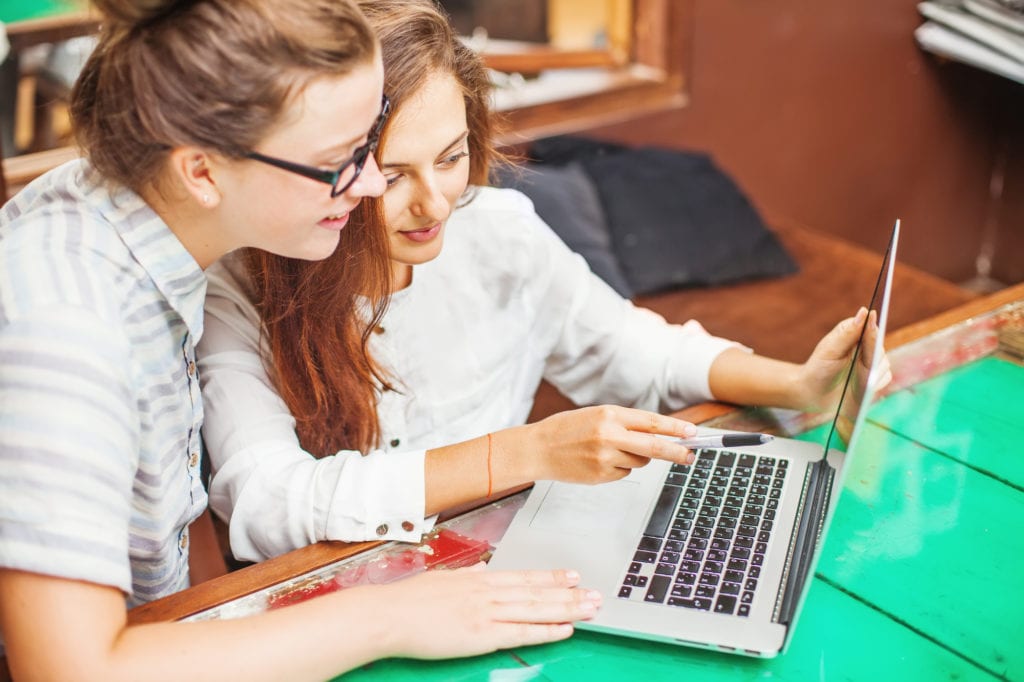
Perhaps the most popular use for a portfolio out in the world is the portfolio as a product.
A product portfolio is a final, culmination of work, where the student has selected each artifact thoughtfully and curated a story with the content.
Unlike the portfolio as a formative assessment tool, teachers may challenge students to curate and polish a final “product” for a standalone evaluation of their progress, such as their summative biology assessment, World War 2 history assignment, or their final capstone project. Outside of school, portfolio submissions are increasingly common additions for college admissions and job applications.

